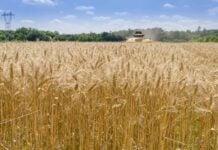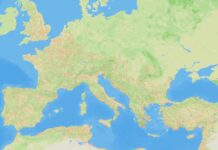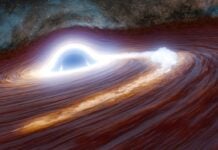For centuries, Easter Island (Rapa Nui) has been portrayed as a cautionary tale of societal collapse driven by environmental destruction – an “ecocide” where a civilization felled its forests and suffered the consequences. However, a new study published in Communications Earth & Environment challenges this long-held narrative, revealing a more complex picture shaped by prolonged drought. Researchers from the Lamont-Doherty Earth Observatory have uncovered the clearest evidence yet that a centuries-long period of reduced rainfall, beginning around 1550, profoundly altered life on the island.
Understanding the Sediment Record: Reconstructing Rainfall from the Past
The research team, led by Redmond Stein, analyzed sediment cores collected from Rano Aroi, a high-elevation wetland, and Rano Kao, a crater lake. By examining the hydrogen isotope composition of plant leaf waxes within these sediments, the scientists were able to reconstruct an 800-year record of rainfall trends. This approach is proving more reliable than previous methods, which often respond to a complex range of factors beyond just rainfall. Leaf wax analysis offers a more direct measurement of local aridity.
Drought and Social Change: A Complex Relationship
The study’s findings show a significant and prolonged decrease in rainfall beginning in the mid-16th century. Researchers estimate that rainfall decreased by roughly 600–800 mm (24-31 inches) per year compared to the preceding centuries. Importantly, this climate shift coincided with noticeable changes in Rapanui society, including:
- A decline in the construction of ceremonial ahu platforms.
- The emergence of Rano Kao lake as a significant ritual site.
- The rise of “Tangata Manu,” a new social hierarchy based on athletic competition rather than ancestral lineage represented by the iconic moai statues.
While it’s difficult to definitively link these events, the timing strongly suggests a connection between climate stress and social transformation.
Challenging the “Ecocide” Narrative
The traditional “ecocide” narrative paints a picture of a civilization that destroyed its own environment, leading to societal conflict and population decline. Although deforestation did occur on Rapa Nui, mounting evidence suggests a more nuanced history. This new study, alongside others, suggests that prolonged drought played a crucial role in shaping the island’s trajectory. The researchers emphasize that their findings do not dismiss the impact of deforestation, but rather provide essential context for understanding Rapanui history.
Lessons for Today: Resilience and Local Perspectives
The study’s findings highlight the resilience of Rapanui communities in the face of significant climate challenges. Researchers caution against using Easter Island’s history as a simplistic parable for modern overconsumption, instead advocating for a shift away from that narrative. They stress the importance of listening to the voices of people from Rapa Nui and other Pacific islands who are currently experiencing the effects of climate change, recognizing their insights as invaluable for addressing today’s problems.
Looking Ahead: Deeper Insights into Atmospheric Dynamics
The research team has a much longer sediment record from Rano Aroi, spanning 50,000 years, which they plan to use to gain a better understanding of how atmospheric circulation in the southeastern Pacific responds to climate change over longer timescales. Located in the remote southeastern Pacific, Rapa Nui is a unique source of terrestrial sediment, offering vital clues about past atmospheric dynamics—processes not well understood and often poorly represented in climate models.
Ultimately, this study underscores that the history of Easter Island is far more complex than the traditional “ecocide” narrative suggests, and offers valuable lessons about resilience and the importance of considering local perspectives in the face of climate change.







































